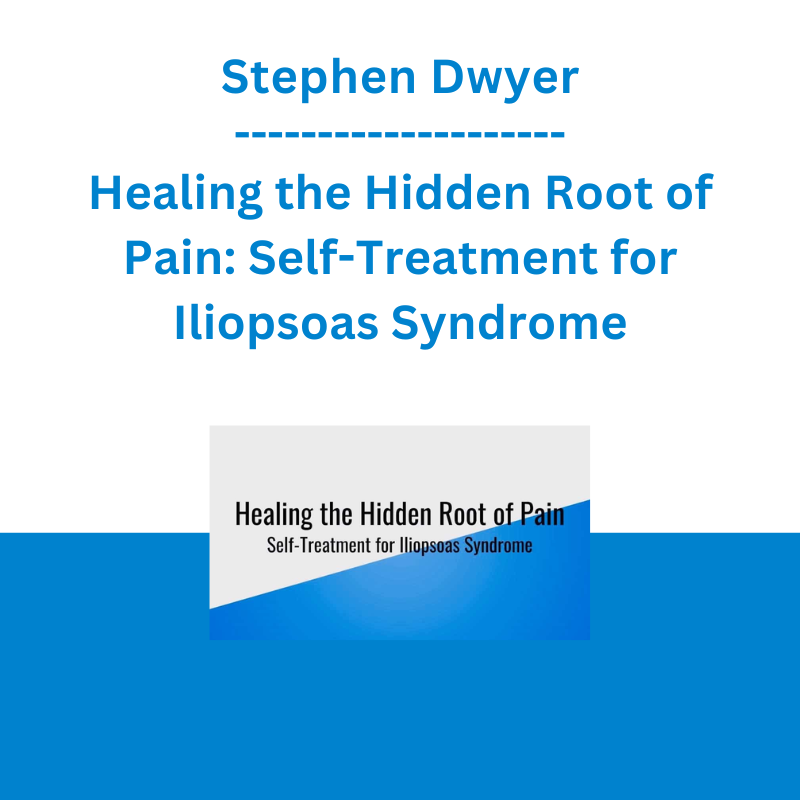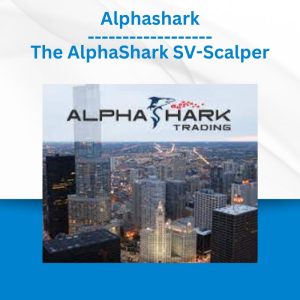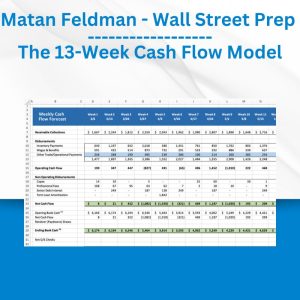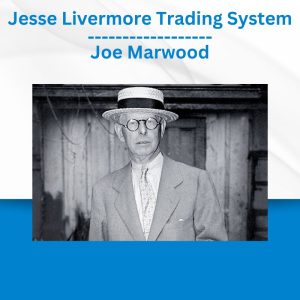*** Proof of Product ***
Exploring the Essential Features of “Stephen Dwyer – Healing the Hidden Root of Pain: Self-Treatment for Iliopsoas Syndrome”
Lasting Relief for Persistent or Unexplained Back, Hip and Leg Pain
SELF-TREATMENT FOR ILIOPSOAS SYNDROME
The only program available anywhere specifically designed to relieve the unexplained pain and symptoms caused by Iliopsoas Syndrome.
If you experience pain that has no clear explanation, it may be because the cause is hidden from view…
The most distressing thing I hear from patients experiencing “unexplained” pain is not what they say about their symptoms, but too often what they tell me their doctor said.
When an X-ray or MRI or CAT scan comes back normal and no clear diagnosis can be made, my clients too often report feeling kind of dismissed, as if the pain is all in their head.
But if pain is being caused by something outside a doctor’s training, it makes sense they can’t diagnosis it, right?
Despite great advances in medicine in the last hundred years, medical school training in the musculoskeletal system is still very lacking.
But it is in the musculoskeletal system where we find answers to numerous problems, including a high percentage of cases of “unexplained” pain.
Such is the case with a very pervasive yet not well understood problem involving the primary hip flexors — the iliopsoas muscle.
Dysfunction in this muscle can cause a condition called Iliopsoas Syndrome which can be responsible for a bewildering array of symptoms.
Because Iliopsoas Syndrome can’t be detected by an X-ray, MRI or CAT scan, this syndrome remains “hidden” from view. Unless you know what to look for.
I’m Stephen O’Dwyer — Neuromuscular Therapist, bodywork instructor and health educator — and for 30 years my entire focus has been treating, researching and teaching about musculoskeletal pain.
Because a high percentage of my patients suffer from Iliopsoas Syndrome, I developed a very specific methodology to address this problem.
This methodology has been so successful in bringing relief for my patients that I created a complete self-treatment program which is now available to the public…
Healing the Hidden Root of Pain: Self-Treatment for Iliopsoas Syndrome is a unique 4-phase system for treating the chronic muscular condition known as Iliopsoas Syndrome. This system mirrors the progression utilized by the instructor, Stephen O’Dwyer, CNMT, when working with his own clients to relieve Iliopsoas Syndrome. By following the protocol laid out in this system, you have a coherent and effective strategy for relieving this problem yourself.
This course utilizes a proprietary 4-phase system specifically designed to relieve Iliopsoas Syndrome
PHASE 1 – CALM
In PHASE 1 we prepare the iliopsoas by calming the muscle utilizing very specific self-massage techniques. This readies the muscle for the movement and activation to follow.
PHASE 2 – REAWAKEN
In PHASE 2 we reawaken the iliopsoas, lower back and pelvis with diaphragmatic breathing and gentle Somatic Movement.
PHASE 3 – RESTORE
In PHASE 3 we restore length and flexibility to the iliopsoas and its synergists using the Active Isolated Stretching.
PHASE 4 – ACTIVATE
In PHASE 4 we activate both the core muscles and also the antagonists of the iliopsoas in order to take full advantage of reciprocal inhibition.
About Stephen O’Dwyer, CNMT
As a Neuromuscular Therapist and pain relief researcher, Stephen has been helping individuals achieve significant and often permanent relief for chronic and recurring musculoskeletal pain since 1990.
Trained in numerous therapeutic modalities for relieving pain — including Neuromuscular Therapy, Myofascial Release, Deep Tissue Bodywork, Somatic Movement Education and Active Isolated Stretching — he has spent three decades developing an integrated methodology for pain relief.
In 2004, he created Lower Back Pain Answers, an information website about lower back pain causes and remedies, and for many years he has been invited to speak to the first-year medical students at the University of Vermont Medical School as part of their Complementary and Alternative Medicine curriculum.
In 2020, due to the outbreak of COVID pandemic, Stephen created Relieving That Pain Online Courses, a learning platform dedicated to individuals suffering from chronic pain.
The 4 Phases of Relief
1 PHASE 1: Self-Massage for the Iliopsoas
We begin with self-massage for the iliopsoas for several reasons. First and foremost, we want to calm the muscle down, reducing whatever spasm might exist. When overworked, muscles can become ischemic (reduced blood flow) and can also develop myofascial trigger points resulting in referred pain.
Referred pain can explain numerous mysterious symptoms and direct manual treatment is an effective strategy to begin to lift them. Very few therapists know how to properly treat the iliopsoas. In this phase, you learn the exact step-by-step method I use to treat patients.
2 PHASE 2: Diaphragmatic Breathing and Somatic Movement
Proper diaphragmatic breathing is one to the most overlooked tools we have to improve blood flow to the iliopsoas muscle, a critical step in relieving the pain caused by dysfunction in this muscle.
Somatic Movement is a slow and gentle type of mobilization that encourages focus on the internal sensation of the movement. When muscles become locked or when they go into spasm we can lose our ability to relax these muscles. Somatic Movement aims to reawaken this muscular control.
3 PHASE 3: Active Isolated Stretching
In this phase we restore length and flexibility to the iliopsoas and its synergists using the easy to do but powerfully effective method of Active Isolated Stretching. This method takes the place of static stretching in which we hold stretches for an extended period of time. By substituting a repeated 2-second stretch for a static hold, Active Isolated Stretching does not trigger the protective stretch reflex, a phenomenon in which a muscle braces against the stretch.
This method of stretching is not only easy to do but also more enjoyable because it replaces the struggle often associated with stretching. Instead of holding a stretch for twenty seconds or thirty seconds or longer, we perform a set number of repetitions which allows for a gradual lengthening of muscle tissue without causing strain.
4 PHASE 4: Toning and Strengthening
We conclude with toning and strengthening of the core muscles and also the antagonists of the iliopsoas which often become weak as a consequence of Iliopsoas Syndrome. By gently activating core and antagonist muscles, we take advantage of a phenomenon called reciprocal inhibition.
For example, when the antagonist of the iliopsoas, the gluteus maximus, has proper tone and strength, the iliopsoas cannot easily clamp down and become tight again. Proper toning and strengthening is essential in order to restore reciprocal muscular balance and achieve lasting pain relief.
I invite you to join me so I can help you to feel better now!
I’m proud to be able to offer this course to you. To date, it stands alone as the only course available anywhere that addresses Iliopsoas Syndrome. I sincerely hope you will be among those I’m able to reach with the courses on this platform, and most importantly that you benefit from the work I’ve devoted my life to. Wishing you well!
Please see the full list of alternative group-buy courses available here: https://lunacourse.com/shop/










 Fred Haug - Virtual Wholesaling Simplified
Fred Haug - Virtual Wholesaling Simplified  Emanuele Bonanni - My Trading Way
Emanuele Bonanni - My Trading Way  Julie Stoian & Cathy Olson - Launch Gorgeous - Funnel Gorgeous Bundle
Julie Stoian & Cathy Olson - Launch Gorgeous - Funnel Gorgeous Bundle  The Daily Traders – Exclusive Trading Mentorship Group
The Daily Traders – Exclusive Trading Mentorship Group  Trade Like Mike - The TLM Playbook 2022
Trade Like Mike - The TLM Playbook 2022  George Fontanills & Tom Gentile - Optionetics Wealth Without Worry Course
George Fontanills & Tom Gentile - Optionetics Wealth Without Worry Course  Ed Ponsi - Forex Trading
Ed Ponsi - Forex Trading  Money Miracle - George Angell - Use Other Peoples Money To Make You Rich
Money Miracle - George Angell - Use Other Peoples Money To Make You Rich  Toshko Raychev - Profit System + ITF Assistant
Toshko Raychev - Profit System + ITF Assistant  Chris Capre - Advanced Price Action Ongoing Training & Webinars
Chris Capre - Advanced Price Action Ongoing Training & Webinars  Matthew Kratter - Trader University
Matthew Kratter - Trader University  Team NFT Money - Ultimate NFT Playbook
Team NFT Money - Ultimate NFT Playbook  SMB - Options Training
SMB - Options Training  Atlas API Training - API 570 Exam Prep Training Course
Atlas API Training - API 570 Exam Prep Training Course  Matan Feldman - The 13-Week Cash Flow Modeling - Wall Street Prep
Matan Feldman - The 13-Week Cash Flow Modeling - Wall Street Prep  Jesse Livermore Trading System - Joe Marwood
Jesse Livermore Trading System - Joe Marwood  Crypto Dan - The Crypto Investing Blueprint To Financial Freedom By 2025
Crypto Dan - The Crypto Investing Blueprint To Financial Freedom By 2025  Erik Banks - Alternative Risk Transfer
Erik Banks - Alternative Risk Transfer